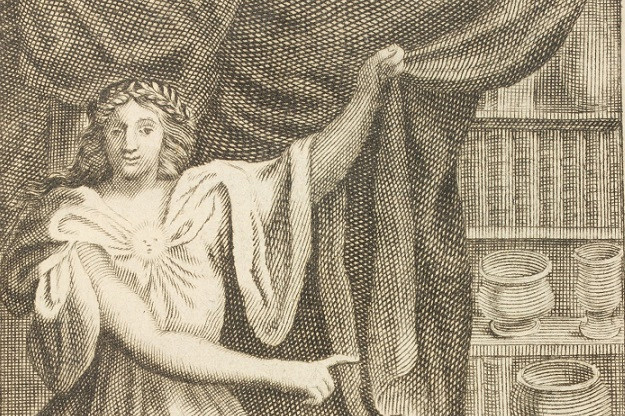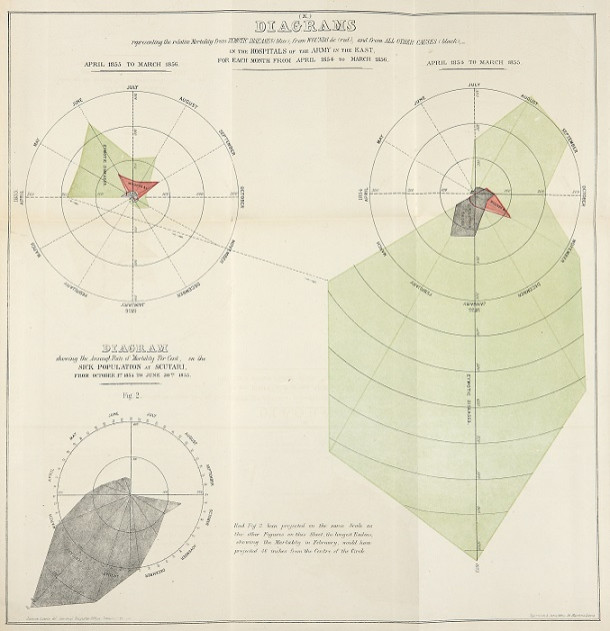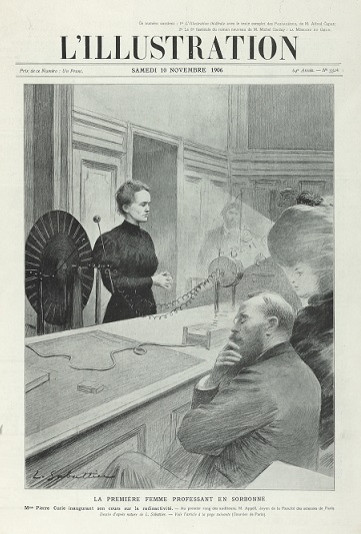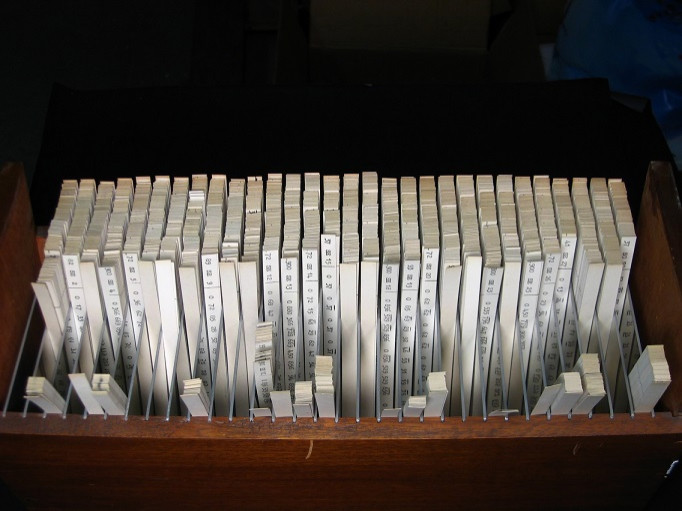A Secret History Of Women In Science, From Marie Curie To Florence Nightingale

The Grolier Club is one of the mainstays of Old New York gentlemen: lots of fancy rare books, upstairs rooms with steins and antlers, and an air of prestige. But for the next two months, women are taking over -- on the ground floor, at least. The rare book club is playing host to a massive exhibit of books, papers and other artifacts illustrating the careers of a host of women physicists, mathematicians, doctors, physicists, computer programmers and other scientists, spanning time periods from the 16th century to the present day.
“This is not the run-of-the-mill stuff you can find at a library,” curator Ronald Smeltzer says.
But the exhibit doesn’t just focus on the scientific discoveries of the female scientists. There’s plenty of artifacts that add a biographical dimension to some of the famous (and not-so-famous) names.
“We were trying to embed the human interest story in the scientific life,” Smeltzer says.
Whether you’re looking to further explore the work of a female scientist you already know about, or ready to discover a totally new researcher, the exhibit has something to offer. Here’s a few tidbits of knowledge:
Florence Nightingale, Passionate Statistician
What do you think of when you hear the name “Florence Nightingale?” Something about nursing, maybe about a condition where nurses fall in love with their charges?
Actually, one of Nightingale’s greatest legacies is related to math. After tending the wounded in the Crimean War, Nightingale furthered the cause of evidence-based medicine by using graphics to present statistical data. She created her own version of the pie chart, which she called a “coxcomb” graph, but which most people today call a polar diagram. A couple of these charts are on display at the exhibit:

Nightingale’s data showed that the vast majority of British dead in the Crimean War were laid low by disease and poor hygiene, not enemy bullets. The results were embarrassing and discomforting for the British Army Medical Department, which stifled ł her work.
Marie Curie Gave A Radioactive Gift To A Philadelphia Museum, Also Did Not Like Wearing Caps
Marie Curie has many notable firsts to her name: first to discover the properties of radioactivity, first person to win two Nobel Prizes in multiple fields, the first woman to win a Nobel Prize and the first woman professor at the University of Paris (depicted here in an on-the-spot illustration, or “dessin d’apres nature,” in a French magazine):

One of the more notable artifacts on display in the exhibit is a device called a piezo-electric quartz apparatus, which two-time Nobel winner Marie Curie used in her experiments. The device was invented by her husband, Pierre Curie, and her brother-in-law Jacques Curie. She used the apparatus, along with some auxiliary equipment, to measure the intensity of ionizing radiation.
On a tour of America, Curie gifted the machine to the Mutter Museum in Philadelphia. The device was radioactive at the time, but has since been decontaminated.
During that same American tour, Curie picked up a number of honorary degrees. She was given an academic cap to wear during these ceremonies, but apparently avoided wearing it as much as possible. You can see her hated cap in the exhibit as well.
Voltaire’s Girlfriend Was A Physicist Who Wrote About The Nature Of Fire
Gabrielle-Emilie Du Chatelet translated Isaac Newton’s masterwork, “Principia,” into French, and added 287 pages of her own commentary. She also helped her lover, the French philosopher Francois-Marie Arouet (better known as Voltaire) with his book, “Elements of Newton’s Philosophy” (bucking the Cartesian trend of the time, both were some of Newton’s biggest partisans in France.)
As a woman, Du Chatelet could not obtain membership in the Academy of Sciences in Paris, but the academy did publish one of her scientific essays, a dissertation on the nature of fire, pondering the relationship between fire, light and heat.
Dorothy Crowfoot Hodgkin Used A “Paper Computer” To Figure Out The Structures Of Molecules
Dorothy Hodgkin deduced the structures of three of the most important substances in medicine to date: penicillin, vitamin B12 and insulin. Figuring out the molecular structure of these molecules was complex work, made even more complex by the lack of computers at the time. To perform a mathematical operation called a Fourier transform, Hodgkin used a calculating device called Beevers-Lipson strips, pictured here:

“Beevers and Lipson strips provided the means for a poor crystallographer to start calculating -- each strip represents the wave-like distribution corresponding with a single term,” Hodgkin said in her 1964 Nobel Lecture.
Other notable pieces in the exhibit include “Urania Propitia,” a book written in 1650 by Polish astronomer Maria Cunitz. Cunitz’s work builds off tables developed by Johannes Kepler used to calculate the positions of planets at any time in the past, present or future. In “Urania Propitia,” Cunitz simplified the math, making it much easier to pinpoint the planets.
There’s also the issue of the journal Nature that includes Rosalind Franklin’s famous X-ray diffraction image of DNA, which helped Francis Crick and James Watson deduce the double helix shape of the molecule (and for which, some say, she didn’t receive nearly enough credit for at the time).
In another case, there’s a paper bag from Nobel Prize-winning botanist Barbara McClintock’s field work, which contains a note scribbled in pencil; an epiphany that certain characteristics of maize were attributable to an extra chromosome.
“Extraordinary Women in Science & Medicine: Four Centuries of Achievement” runs until November 23, at the Ground Floor Gallery of the Grolier Club (47 E 60th St, New York, NY)
© Copyright IBTimes 2024. All rights reserved.





















